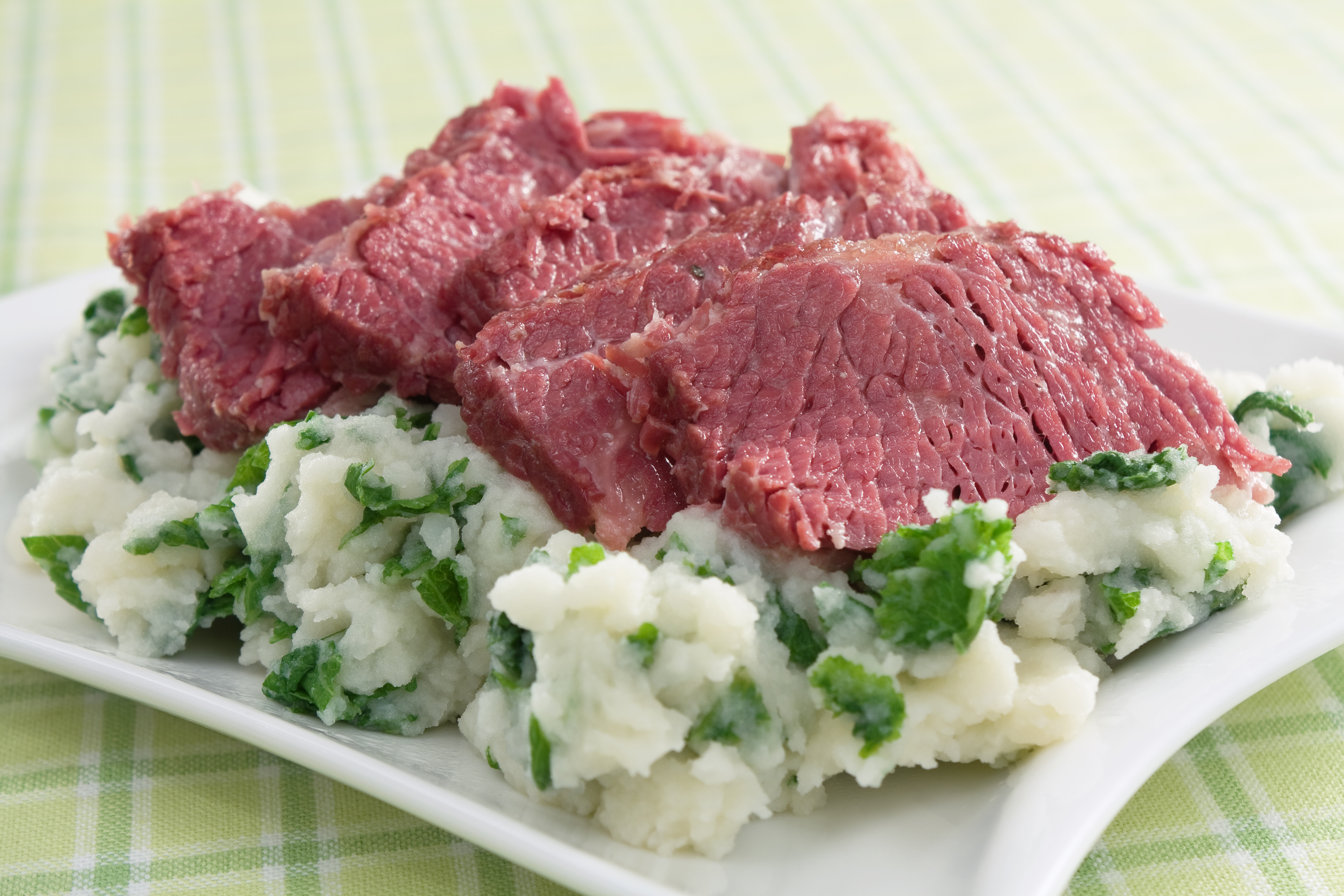
Corned beef has nothing to do with stalks, silk, husks, or cobs.
The corn in corned beef refers to the English use of the word to describe various particles with a bigger-than-granular texture. And, in this case in particular, it means the coarse salt used to cure the beef.
While treating and preserving beef with salt is as old as the ages and found in many cultures, it wasn’t until the Industrial Revolution that manufactured corned beef became prominent in the British Isles. The Irish consumed corned beef domestically to a limited extent, yet exported widely to the British and Americans for soldier rations and to the Caribbean French to feed colonists and slaves alike.
Consequently over time, corned beef’s links to poverty and slavery negatively affected its perception and, therefore, it was eschewed by the upper classes.
Cattle vs. Potatoes
During the periods of Irish famine, much of the best farm land was used by the British as pastureland for raising British cattle on Irish soil. Most of the corned beef produced in Ireland was exported by the British. Land for local agricultural crops was what was left over and was often not very fertile. Yet it was fertile enough to grow potatoes which became the basis for Irish subsistence.
Consequently, outside the Irish cities that produced corned beef, the rest of the Irish population consumed very little of the manufactured product. In fact it wasn’t until Irish immigrants came to North America in the 1700s that they were able to consume corned beef readily.
During the early 20th century, corned beef production shifted from the British Isles to South America.
Corned-Beef: Then and Now
In its earliest production, corned beef was made from various cuts, whatever was left after the most premium cuts were sold to the middle classes and wealthy.
Today, corned beef is not considered native cuisine in Ireland. In the U.S., the proximity of Irish and Jewish populations spurred corned beef consumption and more closely associated it with the Jewish preference for making corned beef from brisket.
The connection of corned beef to St. Patrick’s Day is largely an Irish-American fabrication, including the cooking of corned beef, cabbage, and potatoes together.

Making It on Your Own
Though many recipes for from-scratch corned beef call for weeks-long curing times, here are two ways you can put corned beef on your table in about 5 days, or if you’re really crunched for time, about 5 hours.
Lobel’s Corned Beef recipe includes a recipe for the pickling spices mixture. Aside from the 5 days required for curing, the recipe is easy to follow.
On the other hand, Lobel’s Prime Corned Beef is succulent and pre-cured, but uncooked. Depending on which cut you choose, simmering this corned beef will take from 3 to 5 hours.
We use only certified USDA Prime Beef briskets—abundantly marbled to ensure maximum flavor and supple, juicy texture. The result is the taste of true New York-style deli corned beef—the kind that you see piled a mile high on hearty rye bread with a blast of mustard.
When serving, always slice across the grain as thinly as possible—a deli-style slicer is a wonderful appliance to have in your kitchen for quick and uniform slices.
Have you ever made your own corned beef? What’s your favorite meal to eat on St. Patrick’s Day?



Leave Your Response